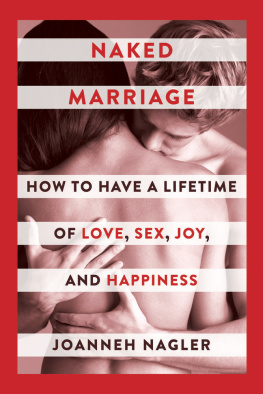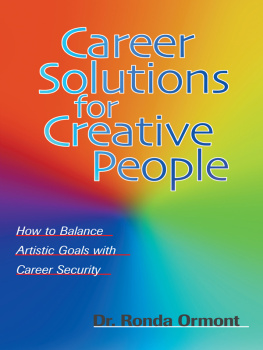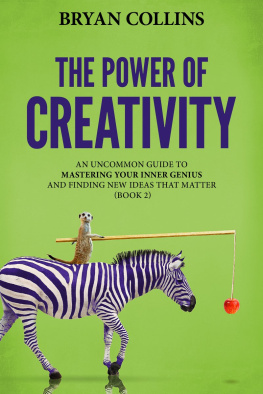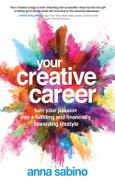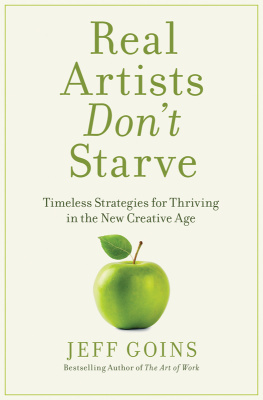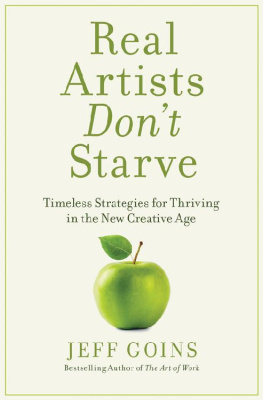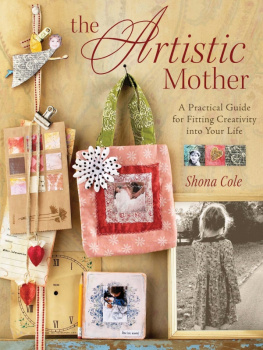Advance Praise for
How to Be an Artist...
Do you dream of living a creative life but cant find the path to get there? Then buy this book! Its the absolute answer to your dreams.
Arielle Eckstut and David Henry Sterry, authors of The Essential Guide to Getting Your Book Published: How to Write It, Sell It, and Market It... Successfully
Whether your challenge is time, money, the distraction of social media, or, like Nagler, a multitude of talents that demand attention and artistic expression, this book will gently guide you back on track to the expression of your true purpose.... Nagler gives simple advice with charm and good humor. A great primer for anyone walking the creative path.
Pat B. Allen, author of Art Is a Way of Knowing
JoAnneh Nagler offers those longing to support their lives through their art the principles and practices for freeing their minds and wholeheartedly devoting their energies to delivering their gifts to the world.
Michael Bernard Beckwith, author of Life Visioning and Spiritual Liberation
As a working artist for over 25 years, I have to admit that this book called my attention to some unproductive habits I have developed. It made me consider, What do I truly want in my life? JoAnneh Nagler lovingly provides motivating guidance and practical methods to create or tune up a life-long, authentic, sustainable, and joyful artistic practice.
Beth Grossman, visual and participatory performance artist

To Michaelfor every endless gift of
love and artistry you give to me.
Copyright 2016 by JoAnneh Nagler
All rights reserved
For information about permission to reproduce
selections from this book, write to Permissions,
The Countryman Press, 500 Fifth Avenue, New York, NY 10110
For information about special discounts for bulk purchases,
please contact W. W. Norton Special Sales at
or 800-233-4830
Book design by Ellen Cipriano
The Library of Congress has cataloged the printed edition as follows:
Names: Nagler, JoAnneh, author.
Title: How to be an artist without losing your mind, your shirt, or your
creative compass : a practical guide / JoAnneh Nagler.
Description: Woodstock, VT : The Countryman
Press, 2016. | Includes index.
Identifiers: LCCN 2015040716 | ISBN 9781581573671 (pbk.)
Subjects: LCSH: ArtistsVocational guidance. | ArtistsPsychology.
|Work-life balance.
Classification: LCC NX163 .N34 2016 | DDC 700.1dc23
LC record available at http://lccn.loc.gov/2015040716
ISBN 978-1-58157-511-8 (e-book)
The Countryman Press
www.countrymanpress.com
A division of W. W. Norton & Company, Inc.
500 Fifth Avenue, New York, NY 10110
www.wwnorton.com
CONTENTS
And what will you do with your one wild and precious life?
MARY OLIVER
HOW TO BE AN
ARTIST
WITHOUT LOSING
YOUR MIND, YOUR
SHIRT, OR YOUR
CREATIVE COMPASS

I never set out to be a creative person, I just was one. From the time I was seven years old, I knew I had something in me that was eating at me to create stuffto draw, to paint, to sculpt, to design. Id find myself in my familys yard in the dirt, making a paste out of mud and sculpting rudimentary objects, then coating them with a chalk I made from pink landscaping stones. I remember sitting at a picnic table at Girl Scouts, doing some charcoal sketching, and noticing, Hmmm. I can do this.
Then I found I could sing; I could hear music. But my parents were also incredibly musical, so I thought everyone had musical talent.
As I grew up I found that I could write, paint, draw, cook, act, play the drums, compose songs, and in those days, it all came to me rather naturally. But I never thought of my artistry as a unique aptitude or as a special gift that I needed to share with my culture. I never thought to value it above my brain or to let it weigh in on the choice of how to spend my future.
Artists were poor, I was told. They struggled. They fought with their family about whether they should pursue their art. They usually ended up giving it upespecially if they were women, to have kids; or, if they were men, to support a family. I thought the people who became artists had a trust fund or were born to parent-artists who supported them financially. I had no idea how to become onea healthy one. All I knew was that I had talent and wanted to use it in some successful way, but I didnt have a clue in hell how to go about it.
My journals from the ages of 15 to 30 are chock-full of the quandary of what to do with the creative press of what came naturally. It was as if something inside me would not let me rest until I figured out how to do my art. I felt pregnant with it, distracted and even bullied by it, but I had no clue how to birth it.
There was no road map, no supports to help me use the gifts that wired me a little differently, and no guidance to help me find a path divergent from the usual workaday, buy-a-house, have-a-family, save-for-retirement road.
In college, every adult in my life was touting the same tagline: Get a degree in business. Thats what youre going to need. Business is where the money is. And though wanting a piece of the postfeminist, businesswoman pie seemed the ticket to having an independent, self-assured life, business left me cold. Even when I succeeded at itwhich I did, early and before collegeI felt no love for it.
When I was 21, I had a voice teacher who took me aside and told me he thought I should pursue music full-time, as a lifelong career. But with no practical skills offered on how to follow that advice or how to live and support myself while I did it, I felt rootless and lost. I knew I was missing things I shouldnt be missing, but I couldnt practically put them together to build a livable life.
What was I supposed to do with the ubiquitous gifts of talent I was uncovering? How was I supposed to apply them? How could I make a living? With no one around to help me learn how to make the choices that mattered to me, how could I know whether I was making the right ones? And just how could I fend off poverty if I wanted to pursue my artistry and still live a decent life?
Years passed in which I missed the bold, brash road signs about my creative nature that were dumped into my path, years in which I was miserably trying to fit myself into professions that squeezed me into pretzel positions that truly made my soul ache.
By my mid-30s I had worked as a restaurant professional, a sales rep, a counselor, a nonprofit fundraiser, a grant writer, a personal chef, a fitness trainer, a classified ads editor, a clinic coordinator, and more. But I felt like a pretender: I could sell myself as a worker, but I had no long-term commitment to the work. I was tormented by the fear that I was wasting my life.
By then I had also worked intermittently (on the side, as I thought of it then) as an actor, writer, and singerall for very little money. But I had yet to step out; I had not yet learned to listen and take the steps needed to put solid supports under my feet to do my art consistently.
It would take me almost three decades to stop doing what I thought I was supposed to do and learn to use the creative skills I knew I had been given to live my life with art at the center. It meant I had to get real about having a day job I could live with. It meant I had to live more simply, on less money, to buy myself art time. It meant I had to stop trying to be everything to everyone else and start crafting my own pathone that had not been blazed before, one that had no dotted lines showing me how to beat back the underbrush.
Next page

